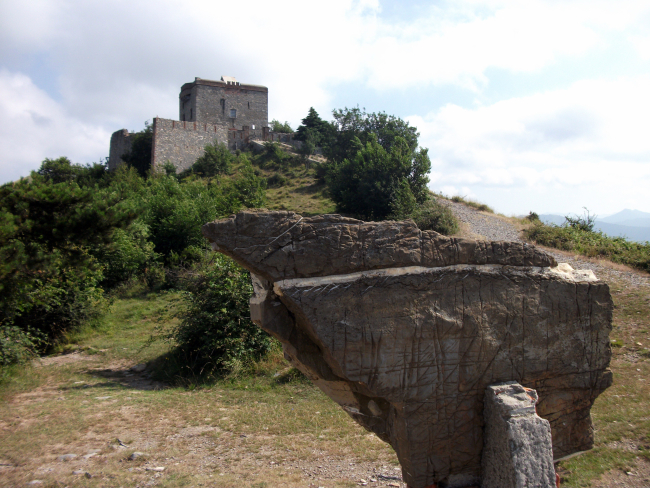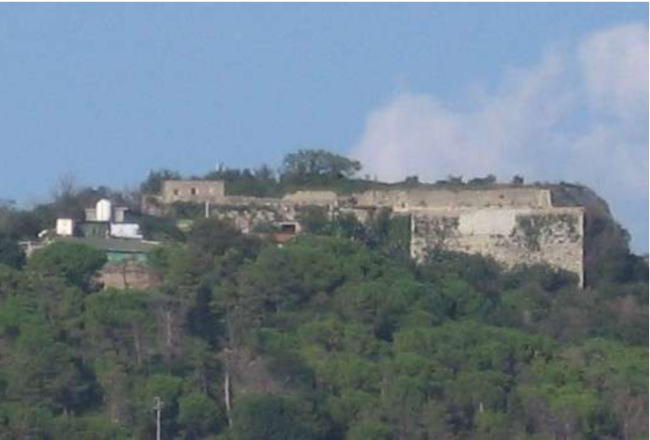Walls and forts
The charm of Genoa "superb for men and for walls" - as Francesco Petrarca wrote 700 years ago - also lies in the extreme variety of the landscape of its territory: Genoa of sea and rocks, Genoa of alleys and palaces, Genoa of hills and woods, Genoa of forts and walls... an extraordinary vertical city
The magnificent landscape of the Protected Natural Area of local interest "Parco delle Mura" owes its name to the New Walls, built in the seventeenth century to better defend the city and its port basin, representing with its 12 km the longest city wall of Europe; these are still well preserved and surround Genoa in a high and almost invisible embrace for those who live and move down below, in the streets of the centre.
This defensive system is the synthesis of military technologies that derive from the main European schools (the French one, in particular, and subsequently the Sardinian Kingdom) and represents a unique example in the entire European panorama, second only to the Chinese Wall.
Jaques De Sicre, the main military engineer who contributed to the creation of the Genoese fortification system in 1700, had as his master Blaise-François Pagan, the same as Vauban, the great architect who created the fortified village of Carcassonne.
In addition to the seventeenth-century walls, the park includes 16 military forts, built between the end of the 18th century and the beginning of the 19th century, gems of a crown that has seen the wounds of time; since 2008 the Park has protected 617 hectares of green hills between the two main city valleys, Val Bisagno and Val Polcevera. The walls and forts are connected by over 16 km of roads and paths immersed in a landscape of meadows, pastures and woods, populated by animal and plant species, some protected because they are rare or endemic.
Path
The classic itinerary starts from the upper terminus of the funicular (Righi) and continues towards the Castellaccio and Sperone Forts, the latter used in the past for events and shows and affected by future recovery projects. The excursion can now continue towards the nineteenth-century Forte Begato towards Val Polcevera - recovered and also used for various activities - or towards the interior to reach Forte Puin, Forte Fratello Minore and the magnificent Forte Diamante, which dominates the area from an altitude of 660m.
The itinerary crosses pastures, meadows, woods, ruins of a rural and pastoral past. Furthermore, there are deviations from the main path that allow connections with other routes and allow you to modulate the visit according to individual needs of time, difficulty and interest.
It is the triumph of a green world, already a destination for trekkers and bikers that the Municipality of Genoa is making more and more attractive, developing an outdoor offer and an ever-increasing connection with its hinterland.
In fact, the area is currently affected by a vast project to redevelop the paths and connections with the city: https://smart.comune.genova.it/sezione/valorizzazione-forti
Also worth mentioning is the connection with the Genoa-Casella railway, which connects the Parco delle mura with the city center via the "Campi" stop.
The historic narrow-gauge railway system winds along a fascinating and very panoramic route surrounded by greenery and represents, together with the aforementioned funicular, the most convenient and picturesque means of transport to reach the Forts.
Other magnificent fortifications stand on the ridge that descends to the west towards the Sampierdarena district - Forte Tenaglie, Forte Crocetta and Forte Belvedere - and on the hills to the east, behind the districts of S. Fruttuoso and Marassi: Forte S. Tecla, Forte Quezzi , Fort Ratti and Fort Richelieu.
Download the brochure (https://www.visitgenoa.it/node/3849)


























